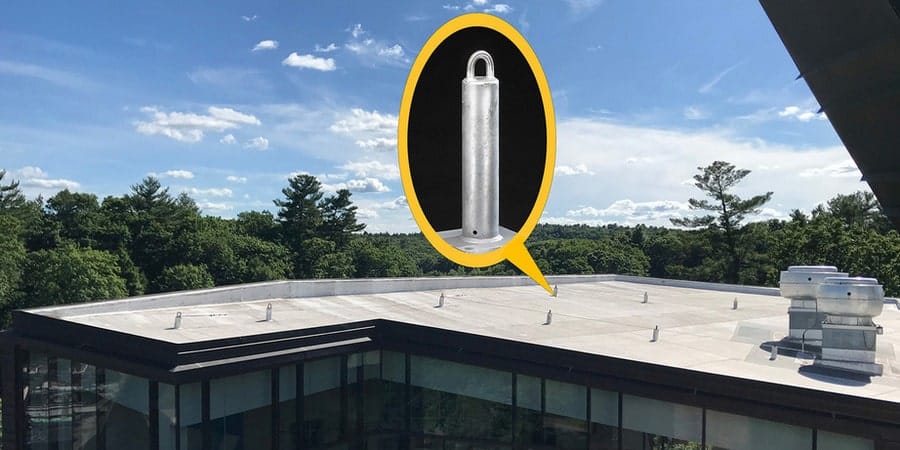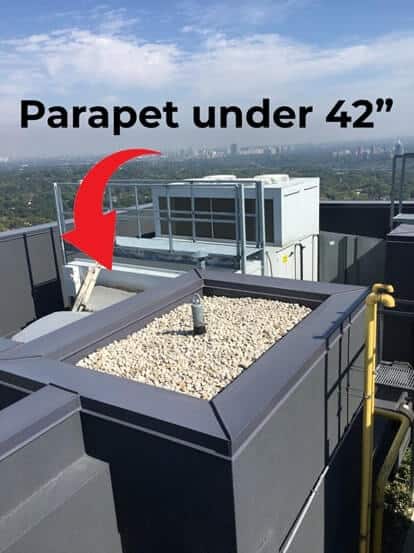
Understanding Temporary and Permanent Roof Anchor Systems
A temporary roof anchor is a portable tieback anchor point that provides workers safety on a roof that otherwise won’t provide fall protection. These anchors are typically used for short-term projects or maintenance tasks and are removed once the job is completed.
On the other hand, a permanent roof anchor is installed into the structure of the building itself. This type of anchor provides fall protection whenever a worker needs to access the roof, making it a reliable safety feature for ongoing maintenance and other long-term needs.
When does a building need a fall protection system?
- Any building with a significant drop distance and no adequate parapet should have tieback anchors to minimize risk. Even a one-story building could cause severe injury or death to a worker in the event of a fall.
- In Canada, anchor points are required based on the specific height of the drop distance. This means that buildings must comply with local fall protection regulations, which often stipulate the use of anchor points for heights exceeding a certain threshold. You can find more information on Canadian fall protection legislation here.
Risks and Challenges of Temporary Roof Anchors
Higher Risk for System Failure
Temporary anchor points run a higher risk of system failure, which could lead to injury or death. This is because they are less securely attached than permanent systems and can be subject to wear and tear from repeated use and weather conditions.
Installation Challenges
Although temporary anchors are convenient for roofs that don’t require frequent maintenance, they must be carefully installed according to the manufacturer’s instructions to reduce liability. Improper installation can lead to accidents, so it is essential to follow guidelines meticulously.
Why Permanent Roof Anchors Are the Better Choice

Due to the higher safety risk associated with temporary roof anchor systems, installing a permanent system on any building with a fall risk is generally recommended. Fall protection anchors installed permanently offer high safety and reliability while working at heights.
Permanent fall protection systems offer a more reliable and durable solution for protecting workers, ensuring compliance with safety regulations, and reducing the liability for building owners. Pro-Bel strongly recommends the use of permanent roof anchor systems for any buildings with significant fall risks to enhance safety and provide peace of mind.
Download the permanent roof anchor brochure or request a consultation.
By understanding the benefits and limitations of temporary and permanent roof anchor systems, building designers and owners can make informed decisions that prioritize worker safety and comply with necessary regulations.
Share this Post
